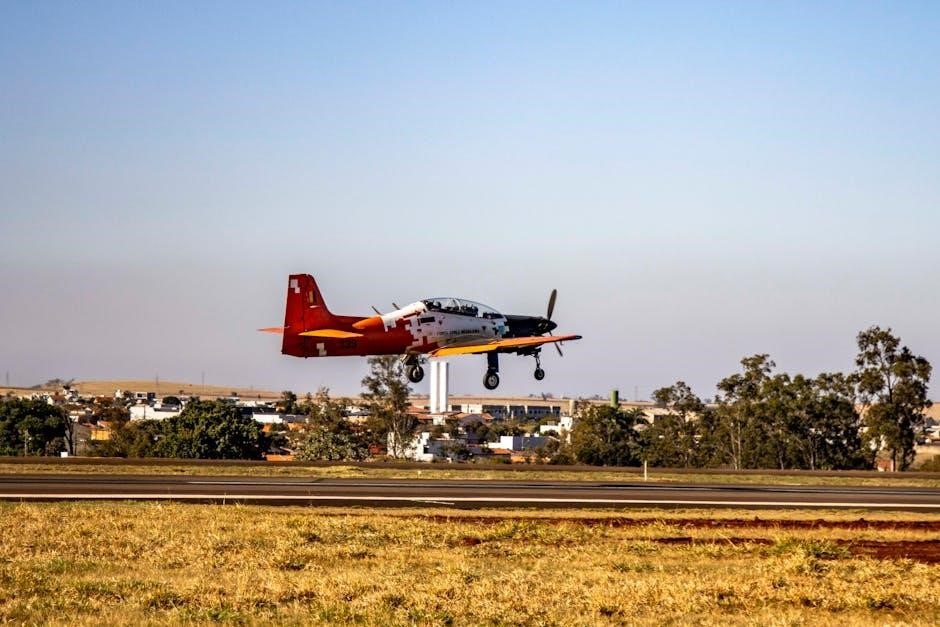The NCAA International Guide is a comprehensive resource for international student-athletes, providing insights into eligibility, recruitment, and academic requirements. It helps navigate the NCAA system, ensuring compliance and success.
1.1 Overview of the NCAA and Its Role in Collegiate Athletics
The NCAA (National Collegiate Athletic Association) governs college athletics in the U.S., overseeing sports competitions, eligibility, and academic standards. It ensures fair play, promotes student-athlete success, and manages championships across divisions. The NCAA plays a pivotal role in shaping collegiate athletics, balancing academic and athletic excellence while fostering opportunities for student-athletes to grow both on and off the field.
1.2 Purpose of the NCAA International Guide
The NCAA International Guide serves as a detailed resource for international student-athletes, coaches, and administrators. It outlines eligibility criteria, recruitment processes, and academic requirements, ensuring a smooth transition for international students. The guide aims to clarify NCAA regulations, facilitate compliance, and provide essential information for successful integration into U.S. collegiate athletics. It addresses unique challenges faced by international athletes, offering guidance on academic and athletic expectations.

Eligibility Criteria for International Student-Athletes
International student-athletes must meet academic and amateurism standards. They need qualifying test scores and approved core courses. Compliance with NCAA rules ensures eligibility for collegiate competition and scholarships.
2.1 Academic Eligibility Requirements
International student-athletes must complete 16 core courses, including English, math, and science. Courses must be approved by the NCAA Eligibility Center. A minimum GPA of 2.3 is required for Division I and 2.2 for Division II. Standardized test scores, such as SAT or ACT, are also mandatory. Academic documents must be translated and certified for evaluation. Meeting these requirements ensures eligibility for NCAA participation and scholarships.
2.2 Amateurism Rules and Regulations
International athletes must adhere to NCAA amateurism rules, ensuring no compensation for athletics participation. They cannot accept cash, gifts, or benefits related to their sport. Amateur status must be maintained prior to college enrollment. Professional athletes or those receiving compensation are ineligible. Documentation may be required to verify amateur status. Compliance with these regulations is crucial for maintaining eligibility and avoiding penalties.

The Recruitment Process for International Athletes
The recruitment process involves NCAA coaches identifying international talent through showcases, camps, and recommendations. Communication is key, with coaches assessing athletes’ skills and academic eligibility to ensure a smooth transition.
3.1 How NCAA Coaches Recruit International Talent
NCAA coaches recruit international talent by attending global showcases, camps, and events. They also rely on recommendations from trusted scouts and coaches. Coaches assess athletes’ skills, academic eligibility, and potential to thrive in the U.S. system. Communication is key, with coaches often maintaining relationships through video calls and visits. This process ensures athletes meet NCAA standards and align with the team’s needs, facilitating a smooth transition to collegiate athletics.
3.2 Role of Recruitment Agencies and Scouts
Recruitment agencies and scouts play a pivotal role in connecting international athletes with NCAA programs. They identify top talent, evaluate skills, and promote athletes to coaches. Scouts often have extensive networks and deep knowledge of international competitions. Agencies handle logistics, ensuring athletes meet eligibility requirements and understand the recruitment process. Their expertise streamlines the journey for athletes, making it easier to secure roster spots and scholarships in the U.S.

Understanding the NCAA Application Process
The NCAA application process involves eligibility checks, document submissions, and compliance reviews. International athletes must ensure all requirements are met before applying to colleges.
4.1 Step-by-Step Guide to Submitting an Application
International athletes must create an NCAA account and complete the eligibility application. Step 1: Provide personal and academic details. Step 2: Enter sports participation history. Step 3: Upload required documents. Step 4: Review and submit the application. Step 5: Pay the application fee. Ensure all information is accurate to avoid delays. A confirmation email will be sent upon successful submission.
4.2 Required Documents for International Applicants
International athletes must submit official transcripts, proof of graduation, and standardized test scores. Additional requirements: certified English translations of non-English documents, proof of language proficiency (if applicable), and amateurism certification. Translations must be certified: ensure accuracy and completeness. Incomplete applications delay processing. Submit all documents to the NCAA Eligibility Center for verification.

Core Course Requirements for International Students
International students must complete 16 core courses in English, math, science, and social science. Courses must meet NCAA eligibility standards and be evaluated for equivalency.
5.1 List of Approved Core Courses
The NCAA requires international students to complete 16 core courses in English, mathematics, science, and social science. Approved courses include four years of English, three years of math (Algebra I or higher), two years of science (lab-based), and two years of social science. Courses must be completed at an NCAA-approved institution and meet specific grade and credit requirements to ensure eligibility.
5.2 Equivalency Standards for International Curricula
The NCAA evaluates international curricula to ensure they meet U.S. academic standards. Courses are assessed for equivalency in content, rigor, and credit. For example, International Baccalaureate (IB) and General Certificate of Education (GCE) courses are reviewed for alignment with NCAA core requirements. Students must submit official transcripts and course syllabi for evaluation. The NCAA uses a sliding scale to convert international grades to U.S. equivalents, ensuring fair eligibility assessments.

Standardized Test Requirements
International athletes must meet specific SAT or ACT scores for NCAA eligibility. Non-native English speakers may also need TOEFL or IELTS scores to demonstrate proficiency.
6.1 SAT and ACT Requirements for International Athletes
International athletes must meet specific SAT or ACT score requirements to be eligible for NCAA participation. The minimum scores vary by division, with Division I requiring higher scores than Division II. Students from non-English speaking countries may also need to meet additional English proficiency standards. Exemptions apply for students from English-speaking countries or those who complete specific coursework in an English-based curriculum.
6.2 TOEFL or IELTS Requirements for Non-Native English Speakers
Non-native English speakers must meet TOEFL or IELTS score requirements to demonstrate English proficiency. The NCAA typically requires a minimum TOEFL score of 61-100 or an IELTS score of 6.0-7.0, depending on the institution. Exemptions may apply for students from English-speaking countries or those who complete coursework in an English-based curriculum. These tests ensure readiness for academic success in U.S; colleges.
Financial Aid and Scholarships for International Athletes
International athletes may receive scholarships covering tuition, fees, and living expenses. NCAA member schools offer various forms of financial aid to support student-athletes.
Additional funding options include grants, assistantships, and private scholarships, helping international athletes manage costs while pursuing their academic and athletic goals in the U.S.
7.1 Types of Scholarships Available
International student-athletes can receive scholarships such as full-ride, partial, or need-based awards. Some scholarships are merit-based, rewarding academic and athletic excellence.
Additional opportunities include sport-specific scholarships offered by coaches and external scholarships from organizations. Eligibility varies, so students should research and consult with their schools to explore available options.
7.2 How to Apply for Financial Aid
International student-athletes must complete the FAFSA (Free Application for Federal Student Aid) to determine eligibility for financial aid. Submit required documents, such as proof of income and academic records, to the school’s financial aid office. Many institutions also require additional forms for international applicants. Contact the NCAA eligibility center and your school’s financial aid office for specific instructions and deadlines to ensure timely processing of your application.

Life as an International Student-Athlete in the NCAA
Life as an international student-athlete in the NCAA offers a unique blend of athletics, academics, and cultural exchange, supported by resources to help navigate both challenges and opportunities.
8.1 Cultural Adaptation and Support Services
International student-athletes often face cultural and language barriers, but the NCAA provides resources to ease the transition. Universities offer orientation programs, cultural workshops, and counseling services to help athletes adapt to American life and academics.
Many institutions also provide peer mentoring programs, where domestic students support international athletes in navigating cultural differences and building social networks. These services foster a sense of belonging and ensure a smoother adjustment to life in the U.S.
8.2 Balancing Academics and Athletics
International student-athletes must balance rigorous academic coursework with demanding athletic schedules. Time management is crucial, as NCAA rules require maintaining academic eligibility. Universities often provide academic support, including tutors, academic advisors, and study halls, to help athletes succeed.
Additionally, many programs emphasize the importance of prioritizing academics alongside sports, ensuring athletes can pursue both their educational and athletic goals effectively during their time in the NCAA.

Common Challenges Faced by International Athletes
International athletes often face cultural adaptation, language barriers, and understanding NCAA rules. Homesickness, visa complexities, and balancing academics with athletics are additional hurdles they must navigate successfully.
9.1 Adjusting to the NCAA Rulebook
International athletes often struggle with understanding the NCAA’s complex rulebook, particularly eligibility requirements and amateurism regulations. Navigating differences from their home country’s athletic systems can be daunting. Compliance with rules regarding recruitment, compensation, and academic standards is crucial, as violations can lead to ineligibility. Athletes must familiarize themselves with these guidelines to ensure they meet all necessary standards and avoid potential penalties or eligibility issues.
9.2 Navigating Visa and Immigration Processes
International athletes must secure an F-1 student visa to compete in the NCAA. The process involves obtaining an I-20 form from the college, proving financial stability, and attending a visa interview. Maintaining full-time student status and adhering to visa regulations is essential. Student-athletes often face challenges balancing athletic commitments with immigration requirements, requiring close coordination with the college’s international office to ensure compliance and avoid visa-related issues.

Success Stories of International NCAA Athletes
International athletes like player Rui Hachimura and soccer star Catarina Macario exemplify success in the NCAA, achieving both athletic and academic excellence while inspiring global talent.
10.1 Notable International Athletes in the NCAA
The NCAA has showcased exceptional international talent, such as Japanese basketball player Rui Hachimura, who starred at Gonzaga, and Brazilian soccer standout Catarina Macario, a Stanford legend. These athletes exemplify the NCAA’s global reach, blending cultural diversity with athletic excellence. Their journeys highlight the opportunities and challenges faced by international athletes, inspiring others to pursue their NCAA dreams.
10.2 Lessons Learned from Successful International Athletes
Successful international athletes in the NCAA emphasize dedication, perseverance, and adaptability. Balancing academics with athletics is crucial, requiring strong time management and discipline. Cultural adjustments, such as language barriers and societal differences, can be overcome with resilience. Leveraging mentorship and support systems fosters success. These lessons highlight the importance of preparation, hard work, and embracing challenges to thrive as an international student-athlete in the NCAA.
Post-Graduation Opportunities for International Athletes
International athletes can pursue professional sports careers, leverage NCAA experience for academic or career advancement, and explore opportunities in their home countries or globally.
11.1 Professional Sports Career Paths
International athletes often transition to professional leagues like the NBA, NFL, or MLS. Agents and scouts play a key role in facilitating these moves. The NCAA’s competitive environment enhances their visibility. Many athletes achieve international acclaim, while others return to their home countries as stars, inspiring future generations. This pathway highlights the NCAA’s role in launching global sports careers.
11.2 Academic and Career Advancement Options
International student-athletes can pursue undergraduate or graduate degrees, leveraging NCAA resources for academic and career guidance. Many transition into fields like sports management, coaching, or business. The NCAA experience enhances employability, with global recognition of their athletic and academic achievements. Some also explore careers in media or public speaking, utilizing their unique background to inspire and lead in various industries worldwide.

Resources and Support for International Athletes
The NCAA provides international athletes with resources like academic advisors, cultural orientation programs, and language support to ease their transition. Additionally, external organizations offer guidance on eligibility, recruitment, and career development, ensuring a smooth journey for international student-athletes in the U.S.
12.1 NCAA Resources for International Students
The NCAA offers specialized resources for international students, including eligibility guidelines, academic support, and cultural adaptation programs. The NCAA Eligibility Center provides detailed information for international athletes, while the NCAA website features a dedicated section for international students. Additionally, the NCAA hosts webinars and workshops to guide students through the eligibility process, ensuring a smooth transition to college athletics in the U.S.
12.2 External Organizations Assisting International Athletes
Several external organizations support international athletes in navigating the NCAA process. The College Board and EducationUSA provide resources for standardized testing and college applications. Additionally, organizations like Global Sports Network and International Student Athlete offer recruitment services and guidance. These entities help bridge gaps in understanding NCAA requirements, ensuring international athletes can seamlessly transition to U.S. college athletics.
Frequently Asked Questions (FAQs)
The FAQs section addresses common inquiries about eligibility, recruitment, and application processes, offering clarity on key aspects of the NCAA International Guide for athletes.
13.1 General Questions About the NCAA International Guide
The NCAA International Guide answers key questions about eligibility, recruitment, and application processes for international athletes. It clarifies requirements for academic qualifications, amateur status, and standardized tests. The guide also provides insights into cultural adaptation, scholarship opportunities, and post-graduation pathways. It serves as a comprehensive resource to help international students navigate the NCAA system effectively and make informed decisions about their athletic and academic careers in the U.S.
- What are the core eligibility requirements for international athletes?
- How do recruitment processes differ for international students?
- What documents are needed for the application process?
13.2 Common Concerns and Misconceptions
International athletes often worry about eligibility, language barriers, and cultural differences. Misconceptions include beliefs that scholarships are unavailable or that international students face unfair treatment. The NCAA International Guide addresses these concerns, clarifying requirements and providing support resources. It reassures athletes that opportunities are equitable and that assistance is available to navigate the transition smoothly.
- Eligibility requirements are manageable with proper guidance.
- Scholarships are accessible to qualified international athletes.
- Cultural support systems help ease the transition.
The NCAA International Guide is your roadmap to success, providing clarity and opportunities. Embrace the journey and achieve your academic and athletic goals today.
14.1 Final Thoughts on Navigating the NCAA as an International Athlete
Navigating the NCAA as an international athlete requires resilience, adaptability, and a deep understanding of the system. By leveraging resources, staying informed, and building a strong support network, you can thrive both on and off the field. Embrace the challenges, celebrate your unique perspective, and make the most of this life-changing opportunity to grow academically, athletically, and personally in the United States.

